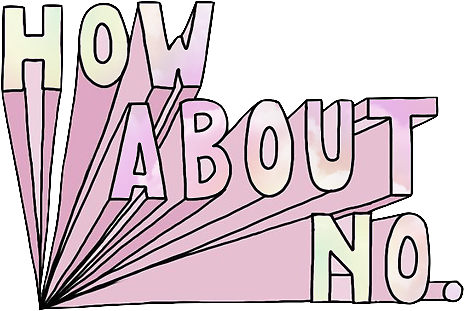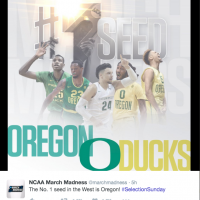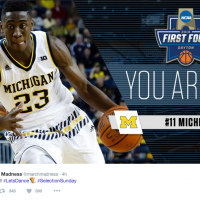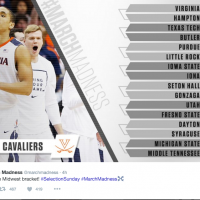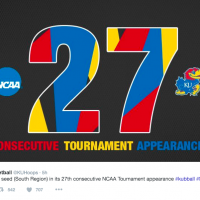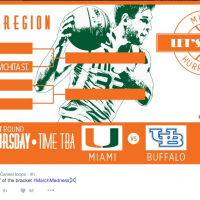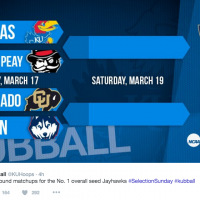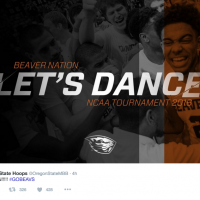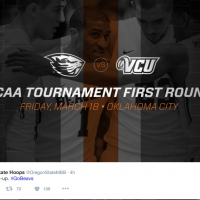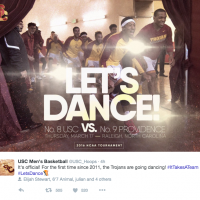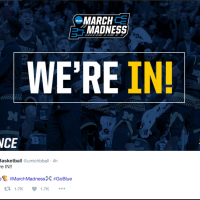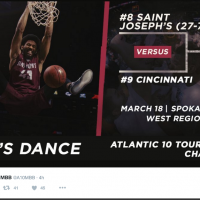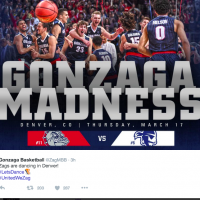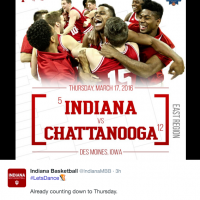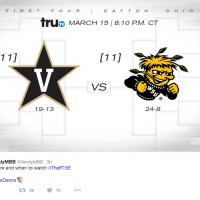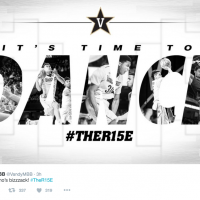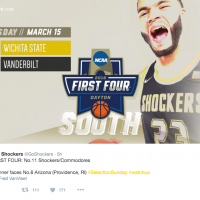There’s inspiration in this industry everywhere you look. From stellar content to new ways to leverage the platforms, teams and leagues are constantly innovating. Below are several solid ideas I’ve come across recently that are worth noting, remembering and tucking away for inspiration.
1- Oregon Ducks: Facebook Live Roll Call
Oregon found a unique way to leverage Facebook Live as a way to not simply push a broadcast but also to engage. They held a roll call where they encouraged fans to comment where they were tuning in, then they mapped out fans across the US in real-time. The broadcast earned more than 52,000 views and 4,000 comments.
I love this on so many levels. Social media is not just about pushing out information; it is also about pulling fans into your brand. As the platforms continue to evolve and new tools are added, we have to find ways to leverage them to build community. This is a perfect example of that.
2- Braves: 360 Schedule Release
The Braves found a clever and unique way to bring their schedule to life way beyond a graphic or a GIF. Like the Ducks, the Braves leveraged a new(er) tool on Facebook to get fans to interact, creating a 360 photo to unveil their 2017 schedule.
It’s easy to get caught up in how things are always done, but when we take the time to step back to figure out creative solves, amazing work is done. Don’t get stuck using content, tools, etc. the same way you always do. Think outside the box and innovate to bring fans in, like the Braves did.
3- Colorado: Illustrations
It can be hard to find a way to mix up your content week after week. The Colorado Buffaloes stepped up their GIF game with dynamic illustrations. While it might be too labor intensive to do these every game, they would be a great series for a rivalry game, big moment, etc. It’s a great way to diversify your content and mix it up.
On his first touch of the game, Phil Lindsay goes for 33! Buffs approaching the red zone! #GoBuffs pic.twitter.com/OL5ckS906p
— Colorado Buffaloes Football (@CUBuffsFootball) September 24, 2016
This graphic (@Matt_Sisneros) is too good only to use once. Everything for gameday at https://t.co/OyEjE9ZfAy pic.twitter.com/NTQJ6VKQjN
— Colorado Buffaloes Football (@CUBuffsFootball) September 17, 2016
4- Cincinnati: Snapchat Geofilter
A lot of teams and leagues are taking advantage of Snapchat’s geofilters. They are cost efficient and a great way to empower fans in stadium to share on behalf of your brand. There have been some fantastic ones so far in the sports industry, like this one from Cincinnati.
The #Bearcats are loving the #BeatHouston gameday 👻 filter & you will too! Send us your best selfie starting at 9am! pic.twitter.com/WFPs3S0VIV
— Cincinnati Football (@GoBearcatsFB) September 15, 2016
What I really love about Cincinnati’s geofilter is it plays into the way fans use Snapchat Lenses, but is much more cost efficient. No, the helmet doesn’t animate like lenses, but it still “transforms” their fans into a Cincinnati player versus having a branded, text overlay for fans to share.
5- Dodgers: #DearVin Campaign
Before Vin Scully’s last game with the Dodgers, the team encouraged fans to submit letters to him using #DearVi. They then took some of the UGC content and turned into content for their own channels. This is a great way to get fans involved and thank them for participating (with zero cost except time).
#DearVin by @BryanCranston pic.twitter.com/x6ec4RnTAs
— Los Angeles Dodgers (@Dodgers) September 24, 2016
#DearVin by @ItsAlexandraaaC pic.twitter.com/RD3CmMWjRE
— Los Angeles Dodgers (@Dodgers) September 24, 2016
Same, @BBrett_01, but we're going to give it a shot tonight. #DearVin pic.twitter.com/aJO6b44FAl
— Los Angeles Dodgers (@Dodgers) September 23, 2016
What other great ideas have you seen in the industry lately? Share them below.
